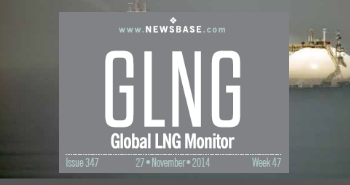EU LNG imports rise 17% in March

LNG deliveries from European import terminals to the EU gas grid surged to an all-time high of 12.7bn cubic metres in March, marking a 17% increase from February and a 19% rise year on year, according to data from Gas Infrastructure Europe (GIE).
The previous record of 12.2 bcm, set in May 2023, was surpassed as Europe continued to draw heavily on LNG to meet demand amid reduced pipeline flows. First-quarter LNG volumes totalled approximately 34 bcm, up 9.6% from the same period in 2024.
Data from the European Network of Transmission System Operators for Gas (ENTSOG) showed that, as of March 30, storage withdrawals accounted for the largest share of the EU’s gas supply at 36.6%. LNG ranked second at 28.5%, followed by North Sea pipeline gas – mainly from Norway – at 19%.
Additional volumes came from North Africa (7.2%), the UK (1.6%) and eastern sources including Russian and Ukrainian gas, along with withdrawals by European firms from Ukrainian storage, which together contributed 4.7%.
European LNG imports have surged this year as a result of a colder end to winter and the loss of Russian pipeline gas flow through Ukraine, following the expiry of Moscow and Kyiv’s transit deal on January 1.
Gas withdrawals from storage have also been at a record high this year as a result of the tight supply situation, with storage volumes down to 33.6% of capacity as of March 31.
The TTF front-month contract closed on April 1 at almost €42.5 per MWh ($488 per 1,000 cubic metres). Prices over the summer months have been driven higher by EU storage targets set by the European Commission, which member states are pushing to be made more flexible to avoid significant refill costs.
Despite losing the majority of its Russian pipeline imports, with only flow via the TurkStream remaining, the EU continues to import significant quantities of Russian LNG, with volumes rising to a record high of 33.6mn tonnes in 2024, up 4% from the previous year. However, the bloc’s ban on transhipment of Russian LNG at its ports on March 26, which is set to impact Russian LNG deliveries to other markets.




Follow us online